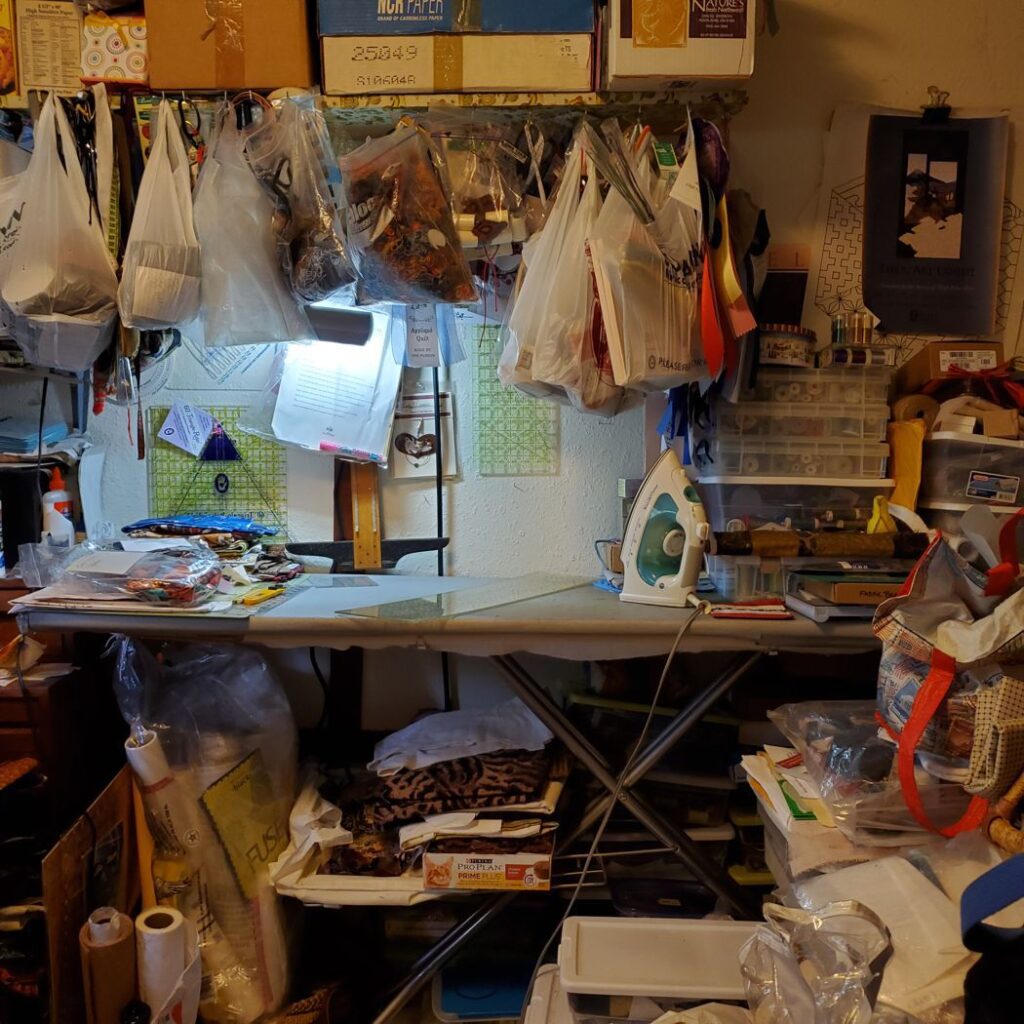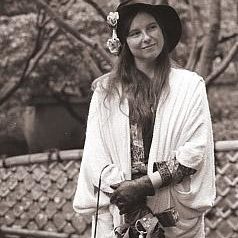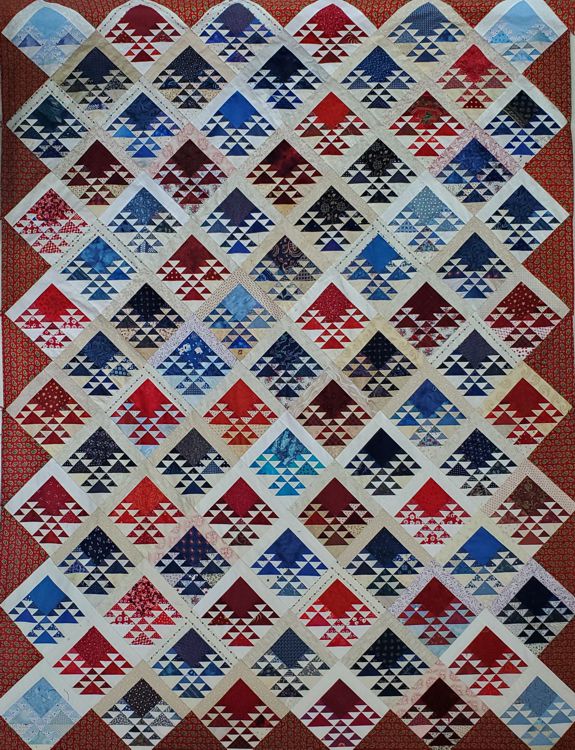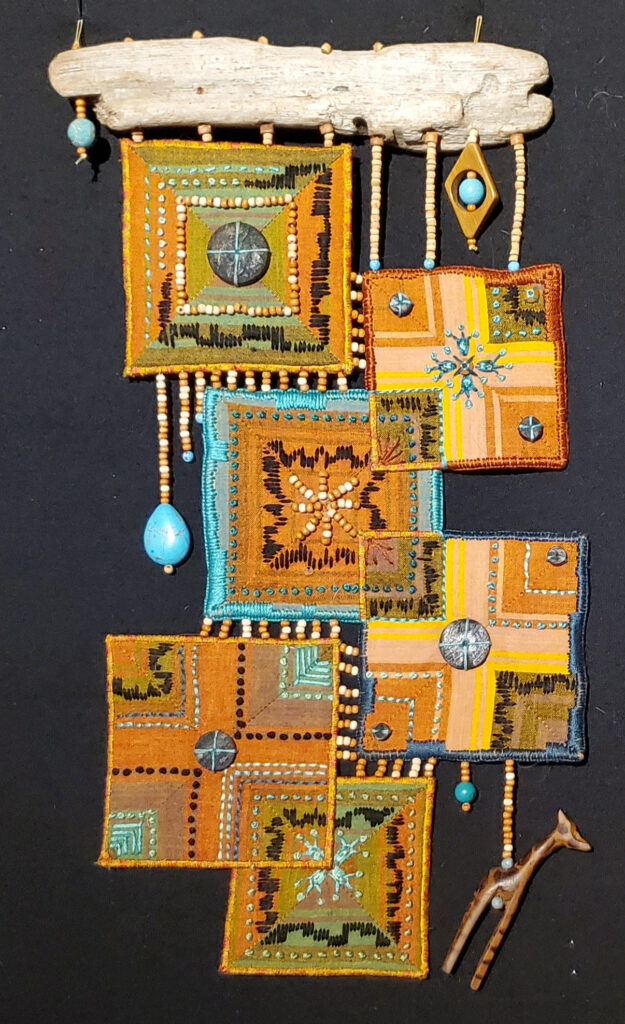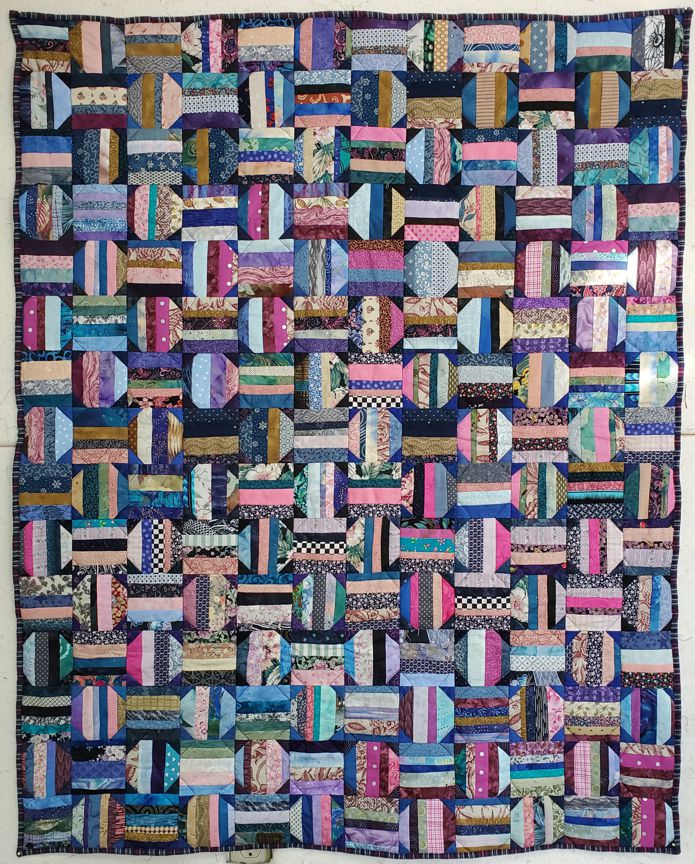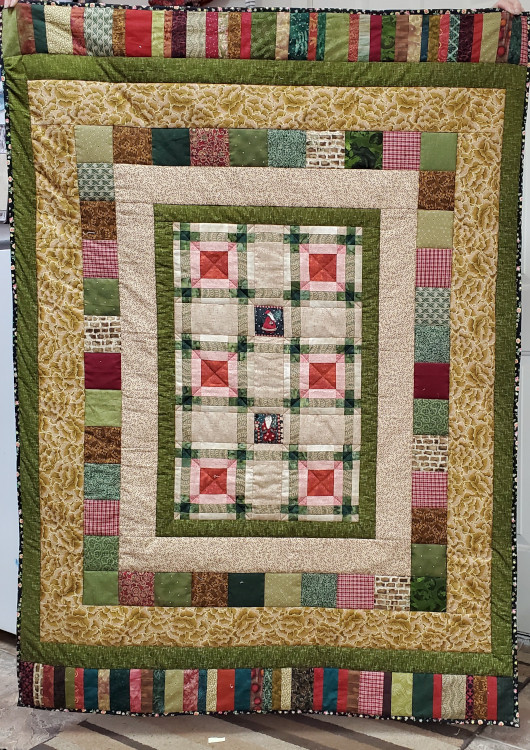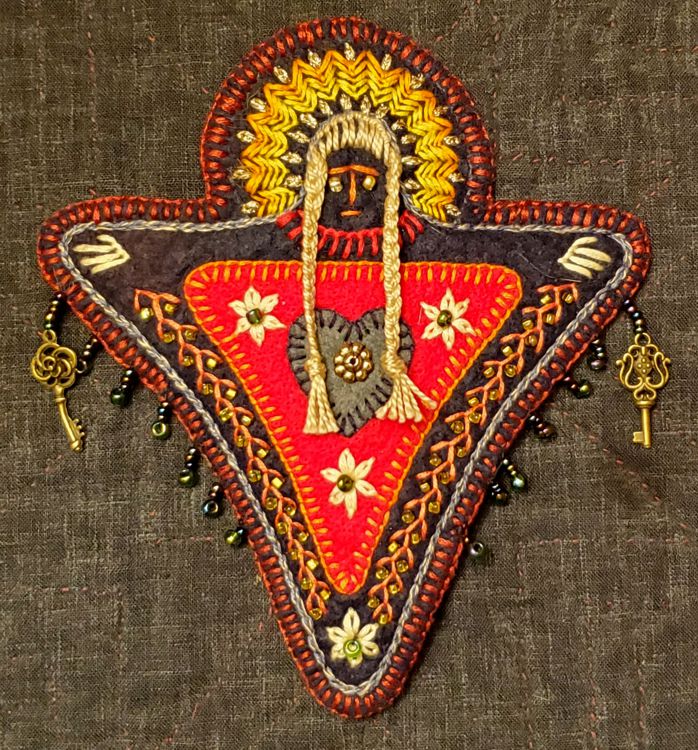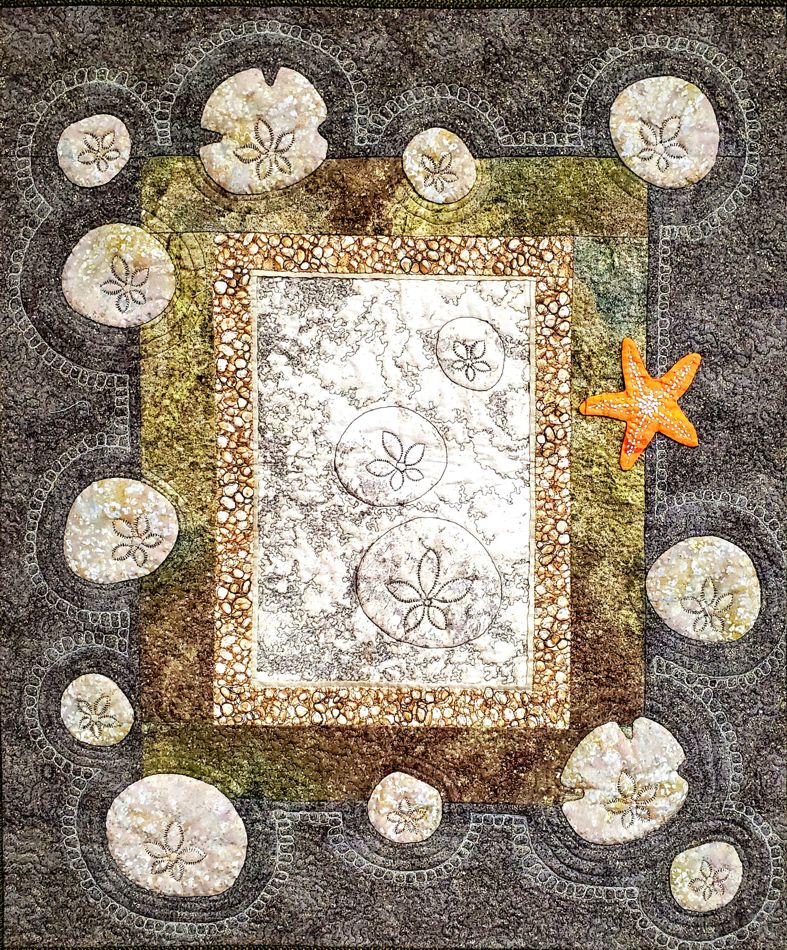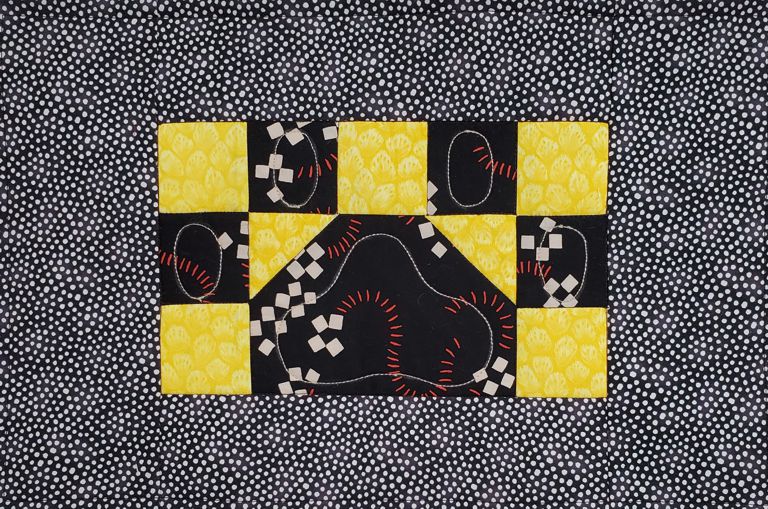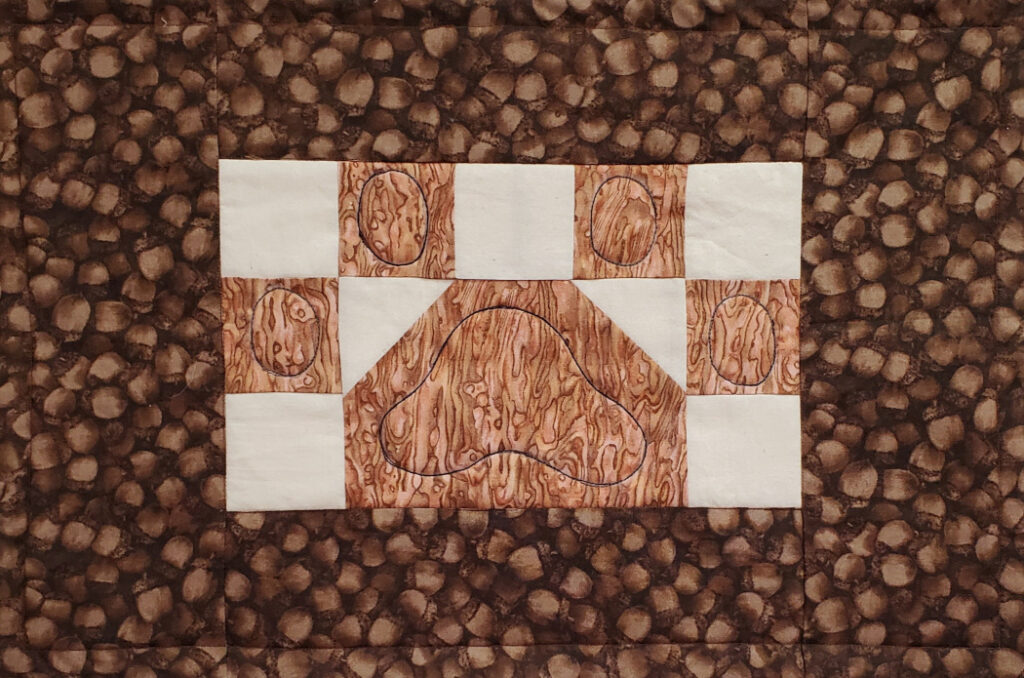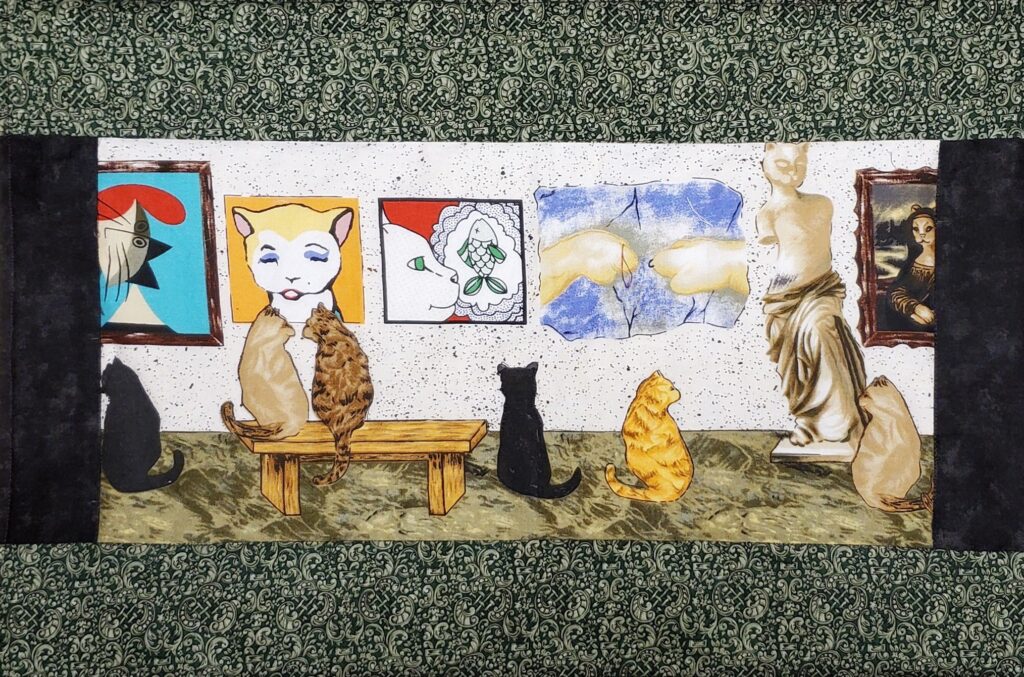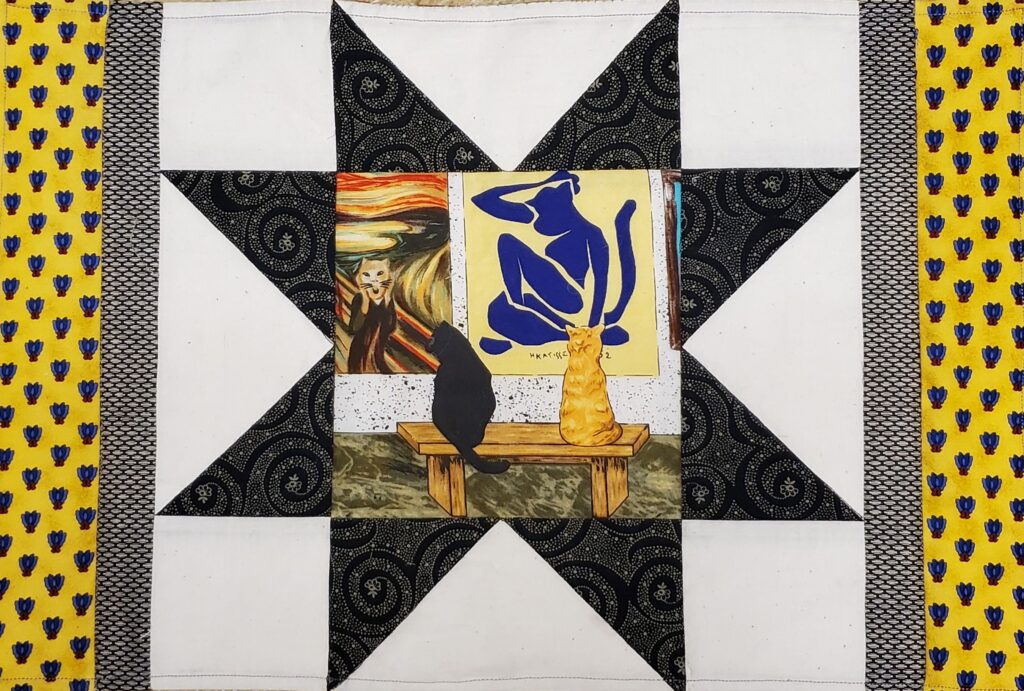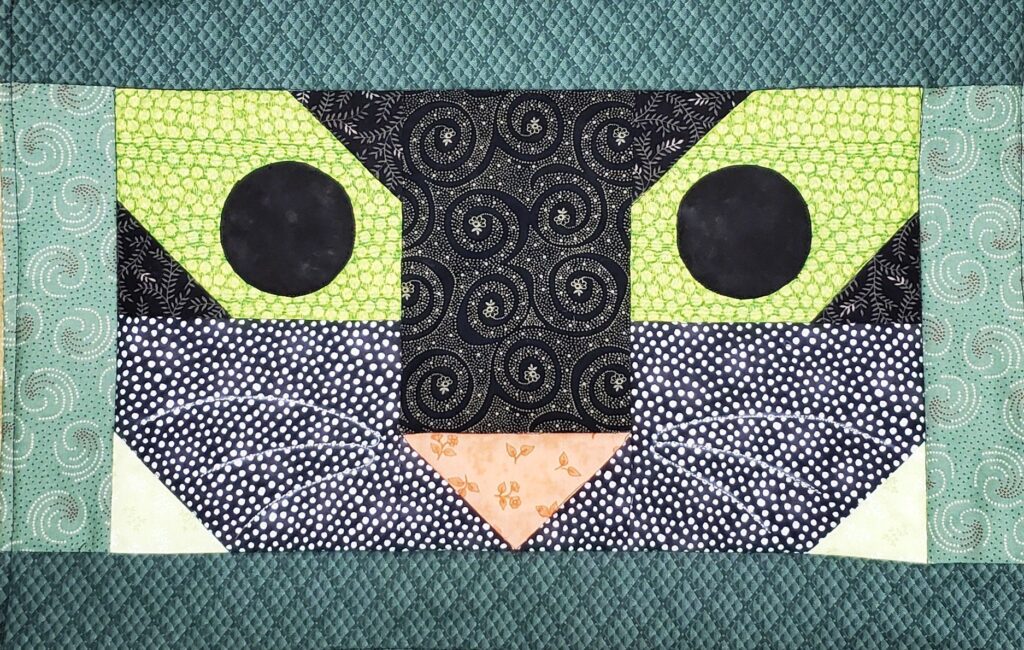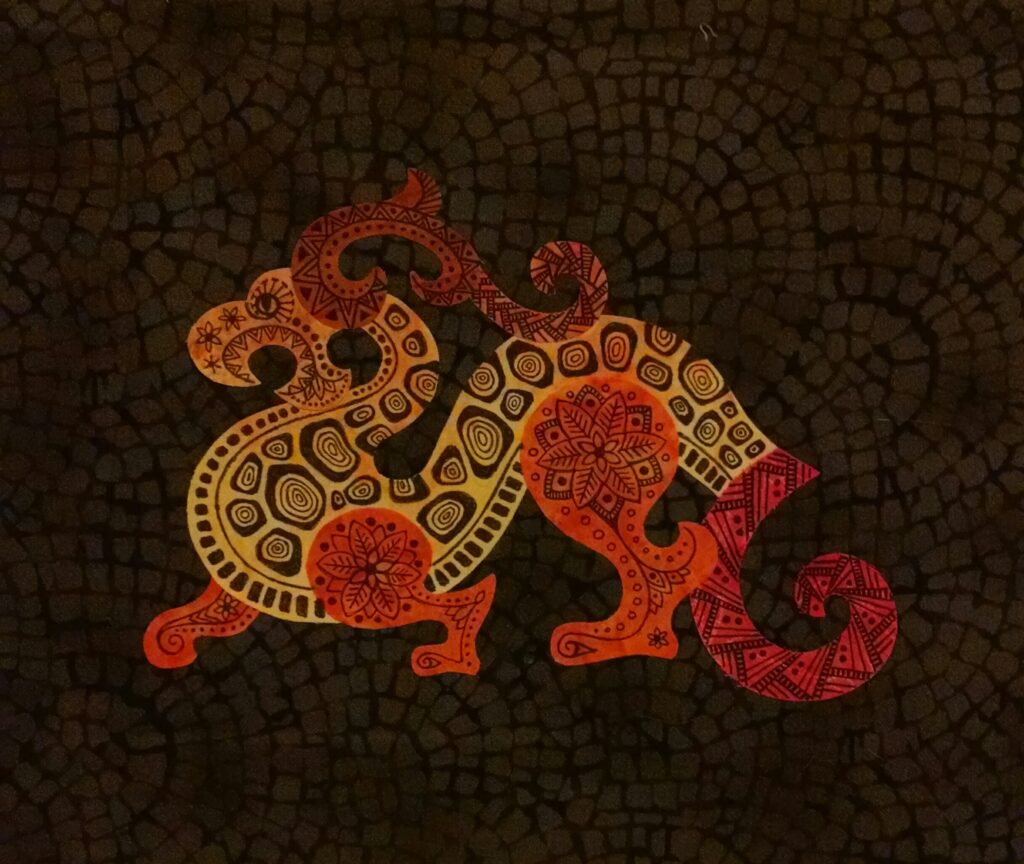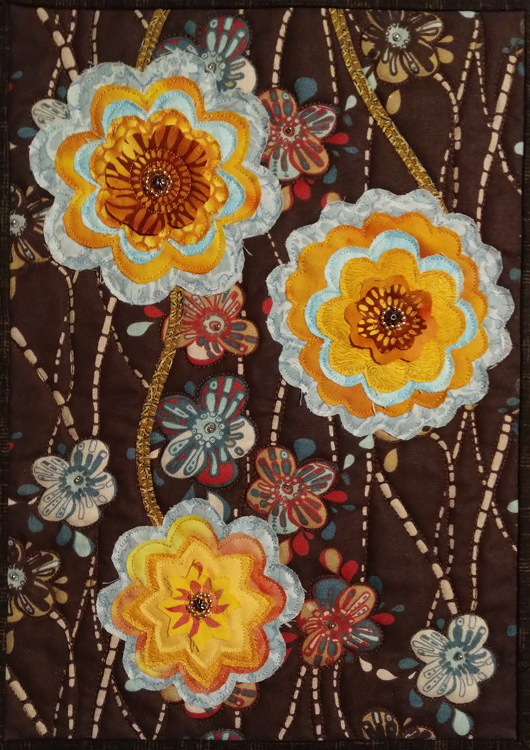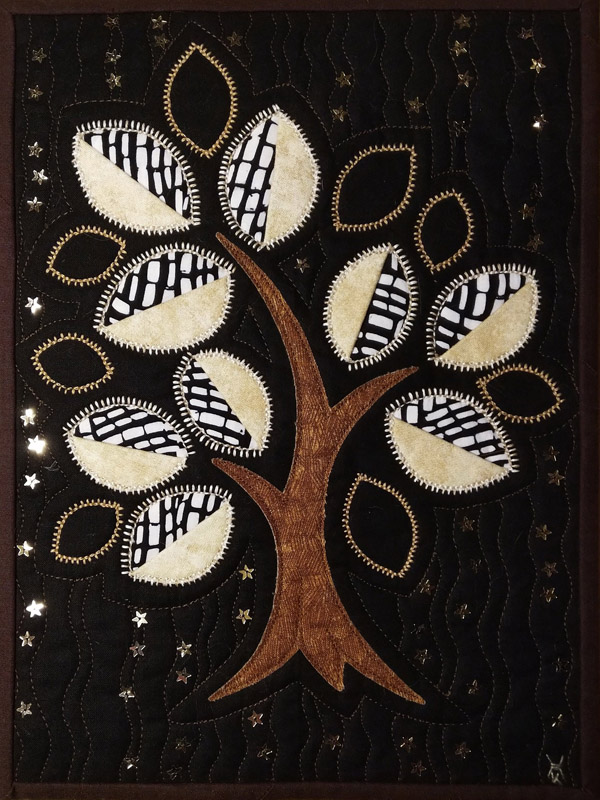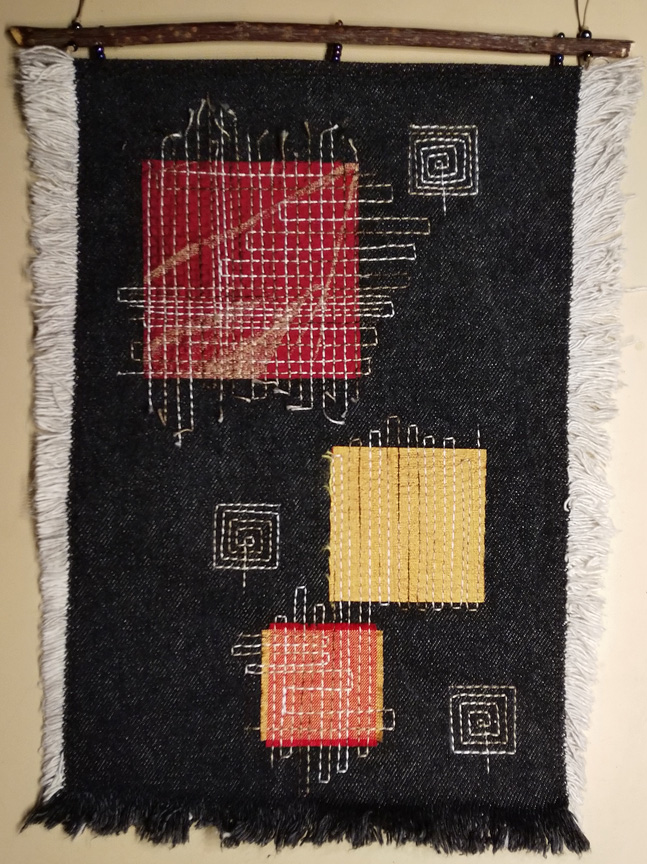It all started with an ironing board. My friend, Jane, was cleaning her studio storage room and came across an ironing board she had put in there and forgot about. That should tell you the state of her storage room – not too different from my sewing room. When I asked about her plans for the ironing board, she told me she already had two boards set up, and this one was going to Goodwill unless I wanted it.
I have two weaknesses: I never turn down free fabric or free sewing tools; OK, make those three; I won’t say ‘no’ to a piece of dark chocolate either. I was not about to turn down this beautiful brand-new ironing board. Mine is serviceable, but it was not a great board from the start, plus it’s ancient and rickety. A new, stable board was an offer too good to pass up.
Between my fabric (ahem) obsession and my Works in Progress (I dare not call them UFOs; they might abduct and beam me up to the Mother Ship), my sewing room is not much different from Jane’s storage room. It does provide exercise, a bona-fide obstacle course worthy of an Olympic Triathelon. To install the new ironing board, I first had to remove the old one. This meant moving boxes of IMPs (Important Materials & Projects) stacked around, beneath, and at both ends of the board. I piled some of these on my already over-stacked sewing table, burying my sewing machine. Other boxes, ranging from shoe-box storage containers to 54-gallon bins of batiks, had to be stacked in the hallway. By now, my husband was giving me the Evil Eye.
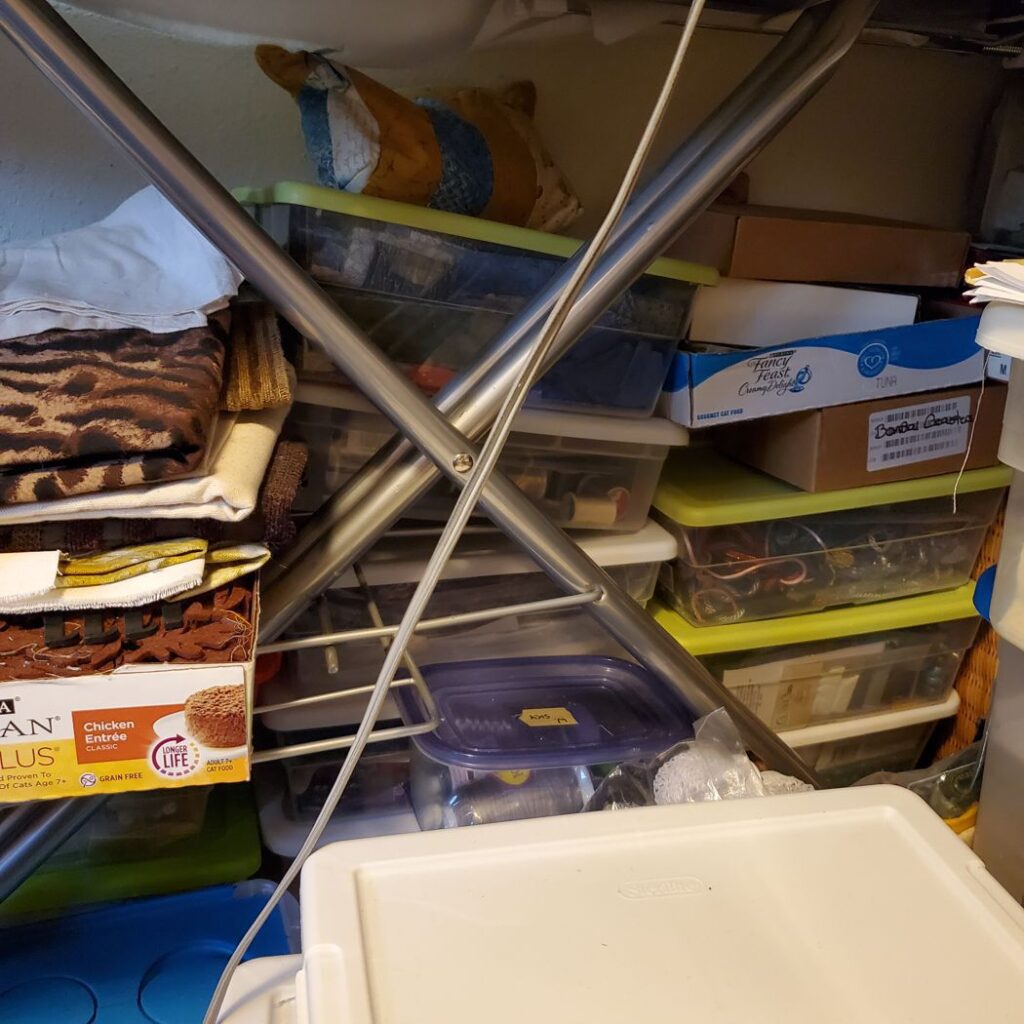
Oh, the things I found behind and under that old ironing board! A rotary cutter I lost long ago, a cutting ruler I didn’t even know I had, and Dust Bunnies – Dust Bunnies on steroids that looked like they had been genetically crossed with elephants. Finally, I could maneuver the old board out and fit the new one in. Or maybe not.
Wouldn’t you know, the legs on the new board extended two inches beyond the old board’s. Just two lousy inches, but enough that the storage bins in the corner at the end of the board no longer fit. They had to be moved to a third area – my office.

This is like wiping the cheek of a muddy child: you made a clean spot, so you may as well bathe the rest of the child. This would be a perfect time to reorganize and clean my sewing room. But it was time for a break, so I sat at my computer, sipping a cup of tea, and emailed my friend. “Just look at what you started”, I typed in accusation.
I confess I’m not very disciplined and live for the creative moment. I’m not diligent about returning a tool or fabric to its ‘proper’ place. Not only might I need it again soon, but I also don’t want to waste any of my creative time on something as left-brained as putting something away where it belongs. And so it begins.
Mountains are formed one grain of sand at a time, and so, too, quilting clutter. Finding something in my sewing room is an exercise in Archaeology – I don’t search so much as excavate layers, determining the era in which that layer was laid down. If I am looking for something I used last week, I know I’m in the wrong place when I start uncovering projects I last worked on six months ago. I would rather clean up after a national disaster than try to clean my sewing room, but this was a perfect opportunity to reorganize the detritus of my creativity. Many of you may be familiar with that quote – “God grant me the serenity…” my version is: “God grant me the decisiveness to abandon UFOs I have no more interest in, the perseverance to finish those I am still invested in and the rationality to identify one from the other”.
Before you frown at my lack of discipline let me assure you it is born from long experience that the worst thing I can do is put something somewhere sensible. A logical storage space on Monday will not be so on Friday. Take the bag of flower buttons I bought years ago. They were tossed onto a corner of my sewing table and happily resided there for many years, doing no harm. Now and again, I would notice the bag and peek inside to remind me of the contents and replace it in that corner. A year ago, in an attempt to clear my sewing table, I put them where they belonged. Now that I want to use those buttons, where they “belonged” is obviously not where they need to be because I have yet to find them. If only I had just left them there on the sewing table.
The last time I reorganized my sewing room, it turned into a week-long endeavor rivaling the reorganizing of a Fortune 500 company. The process worsens before it gets better as things are moved to temporary shelters while their permanent space is prepared. In this case, that shelter was my office, and that’s when I discovered, to my horror, that they were contagious. A few boxes placed in my office looked harmless, but before I knew it, my office had become infected and now needed reorganizing as well.
That was days ago, and I just uncovered my sewing machine. This might be easy if my time for designing, sample making, and teaching weren’t being shared with a disabled husband, two cats, a parrot, and a dog, but I’m in it for the long run; maybe this overhaul will last longer than the previous one. That time, my sewing room was perfect for a whole month before the cycle began again like an unloved season
Meanwhile, my lovely new ironing board is sitting innocently against one wall, looking for the whole world like the cat that ate the canary and is now burping up feathers and saying – “Who, me?”
